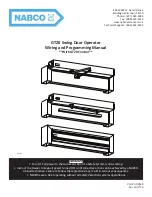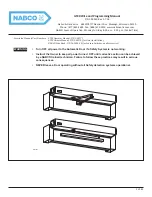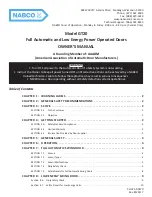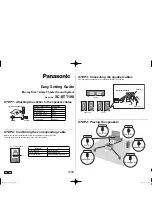
A WILKINSON STAR PRODUCT 10-17 ISSUE 3
Never use broken or faulty welding helmets.
Always ensure there are adequate protective
screens or barriers to protect others from flash,
glare and sparks from the welding area. Ensure
that there are adequate warnings that welding or
cutting is taking place.
Wear suitable protective flame resistant clothing.
The sparks and spatter from welding, hot work
pieces, and hot equipment can cause fires and
burns
Welding on closed containers, such as tanks,
drums, or pipes, can cause them to explode.
Accidental contact of electrode to metal objects
can cause arcs, explosion, overheating, or fire.
Check and be sure the area is safe and clear of
inflammable material before carrying out any
welding.
Protection against noise
Some welding and cutting operations may produce
noise.
Wear safety ear protection to protect your hearing.
Protection from moving parts
When the machine is in operation keep away from
moving parts such as motors and fans. Moving
parts, such as the fan, may cut fingers and hands
and snag garments.
Protections and coverings may be removed for
maintenance and controls only by qualified
personnel, after first disconnecting the power
supply cable.
Replace the coverings and protections and close all
doors when the intervention is finished, and before
starting the equipment.
Take care to avoid getting fingers trapped when
loading and feeding wire during set up and
operation.
When feeding wire be careful to avoid pointing it at
other people or toward your body.
Always ensure machine covers and protective
devices are in operation.
Precautions against fire and explosion
Avoid causing fires due to sparks and hot waste or
molten metal
Ensure that appropriate fire safety devices are
available near the cutting / welding area.
Remove all flammable and combustible materials
from the cutting / welding zone and surrounding
areas
Do not cut/weld fuel and lubricant containers, even
if empty.
These must be carefully cleaned before they can be
cut/ welded.
Always allow the cut/welded material to cool
before touching it or placing it in contact with
combustible or flammable material.
Do not work in atmospheres with high
concentrations of combustible fumes, flammable
gases and dust.
Always check the work area half an hour after
cutting to make sure that no fires have begun.
Risks due to magnetic fields
The magnetic fields created by high currents may
affect
the
operation
of
pacemakers
or
electronically controlled medical equipment.
Wearers of vital electronic equipment should
consult their physician before beginning any arc
welding, cutting, gouging or spot welding
operations.
Do not go near welding equipment with any
sensitive electronic equipment as the magnetic
fields may cause damage.
RF Declaration
Equipment that complies with directive 2004/108/
EC concerning electromagnetic compatibility (EMC)
and the technical requirements of EN60974-10 is
designed for use in industrial buildings and not






























